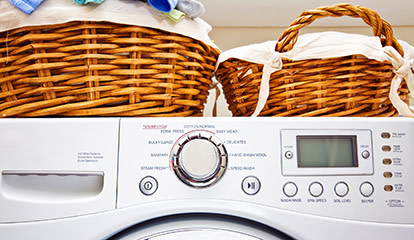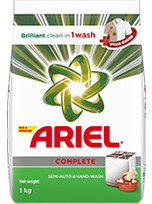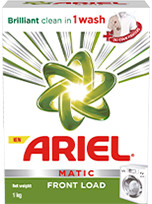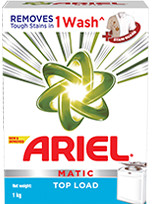Want to know all about your washing machine? Discover the specific parts and their purpose with Ariel – find out more! Your washing machine is a complex appliance, and sometimes you may feel a little confused when it comes to washing machine installation or even dealing with washing machine problems. To help you understand your washer better, here’s an introduction to washing machine parts as well as some basic information on how your machine works.
Parts of the washer
Since each washing machine comes with its own design and features, some of the parts will vary between your machine. But get to know your washer with some common parts you can find in your machine.
Water pump. This circulates the water through the machine, rotating in two directions. It’s used for circulating the water through the wash cycle and also for draining the water during the spin cycle.
Water inlet control valve. This is located near the water inlet point, which is opens and closes automatically when you load the clothes, depending on how much water is required.
Drum. Did you know that washing machines actually have two tubs? The one you see where the clothes are loaded is the inner drum, which moves around the washing machine and is perforated with holes to allow the water in and out. The outer tub contains the inner drum and the water, stopping it from leaking into the rest of the machine and supports the inner drum.
Agitator or paddles. This is located inside the tub of the washing machine and helps perform the cleaning of the clothes. Most fully-automatic washing machines have these paddles on the rotating inner drum which is controlled by a rotating disc, whereas semi-automatic washing machines use an agitator that rotates within the machine to produce a current in the machine. Either way, these are designed to move the clothes around during the wash to allow the detergent to work and remove dirt particles and soiling from your clothes, helping the clothes rub together while washing.
Washing machine motor. This is combined with the agitator or the disc that turns the drum, it produces a rotator motion. This is basically the mechanism that gets your machine going.
Drain pipe. All the dirty water from your washing is expelled from the machine via the drain pipe.
Printed circuit board (PCB). This is where you’ll find mainly the electronics that operate the machine from electrical components to circuits. These can be programmed and help operate the machine, acting as the artificial intelligence for the washing machine, sometimes even deciding on the time needed for rinsing or washing.
Timer. This helps set the wash time for your clothes, which can be set manually or automatically.
Heating element. This heats the water up in the washing machine to the desired temperature.
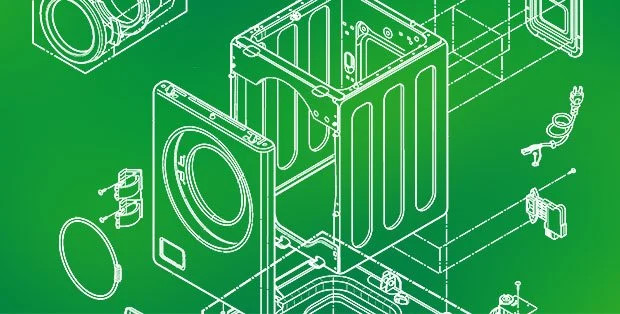
How does a washing machine work?
Most of your washing machine processes are electrically controlled, such as the drum, valves, pump, motor and heating. Your average wash will go something like this:
You load the machine with your laundry, dose with Ariel and select the program you need.
The programmer in your machine opens the valves to let the hot and cold water into the machine, this then fills both drums up. Some water also enters the detergent tray (if your machine uses one), and washes any detergent into the main part of the machine.
The valves are switched off once the water has entered the machine.
The thermostat measures the water coming into your washing machine and may heat up the water using the heating element to the required temperature.
Once the water is at the desired temperature, the inner drum begins to rotate back and forth, mixing the clothes up in the warm, soapy water, agitating them to help remove stains and soiling.
The detergent helps remove the dirt from the clothes, and pulls it into the water.
The valve opens again and the dirty water drains out of the drums. The pump works to help get rid of the water.
The valve lets clean water in again into the drums.
The inner drum rotates again to rinse the clothes from any remaining dirty water or detergent.
Once rinsed, the inner drum starts to spin at high speed to remove any remaining water. This water goes out through the small holes in the inner drum into the outer drum before the pump removes any remaining water, and your clothes are ready to be taken out to dry.
Identifying the root source of a problem you can have in your machine
With so many complex components in the washing machine, there’s also a lot that can go wrong with your washer. You may have problems during washing machine installation if the water supply is not connected correctly, or you find you need washing machine repair as the motor fails or the valves don’t work. Unless you know what you’re doing with your machine, it’s best to call a professional, or you may be at risk of breaking your warranty.
However, if you find your fully-automatic washing machine is not giving you the stain removal results you’re looking for, perhaps it’s your detergent that’s the problem. Hand washing detergent can produce too many suds in your machine during the wash, making it more difficult to remove stains and remove detergent. This is why you’ll want to use a detergent that’s designed for fully-automatic washing machines like Ariel.
Ariel is specially designed to meet your needs and is uniquely formulated to ensure the best performance inside your washing machine. Ariel offers a range of detergents from regular Ariel (for your semi-automatic washing machines) to Ariel Matic Front Load (for your fully-automatic front load washing machine) and Ariel Matic Top Load (for your fully-automatic top load washing machine), to ensure you get the best stain removal in 1-wash.
Related articles
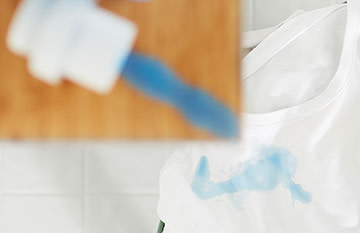
How to effectively measure the correct dosage for your wash
If you’re not sure about how much detergent to use in your laundry, just know that you’re not alone!
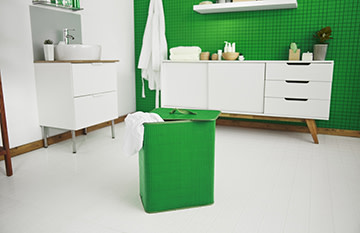
Your guide on how to effectively clean a washing machine and when
Just like your clothes need washing, your machine also needs cleaning.

How Does a Washing Machine Work?
Washing machines make the household tasks so much easier, especially if you have a big family and lots of laundry to do.

